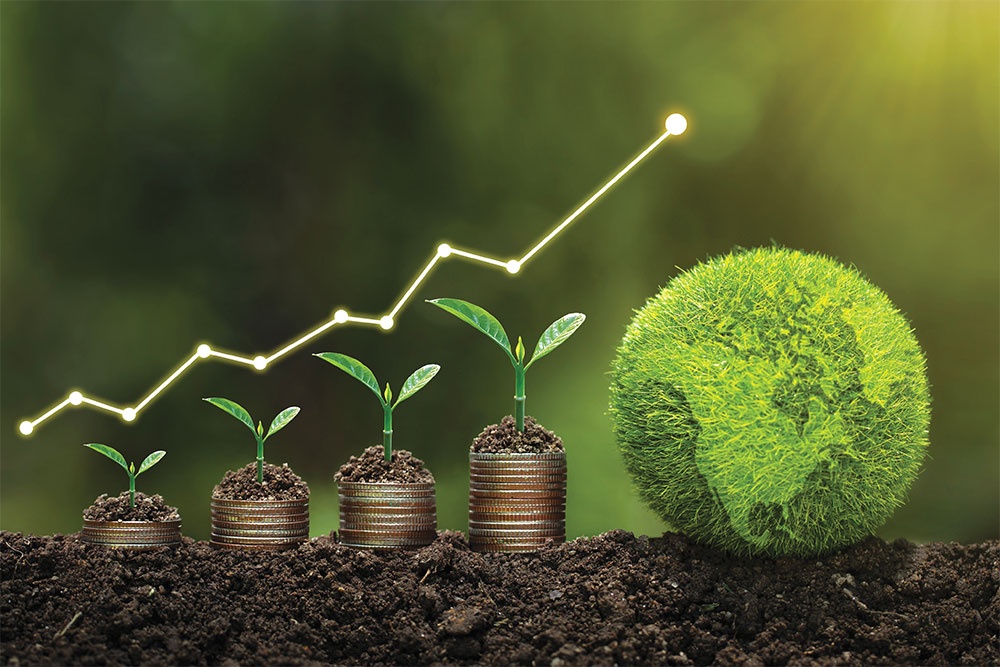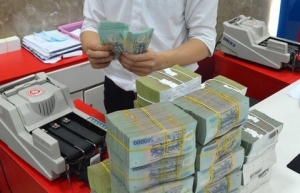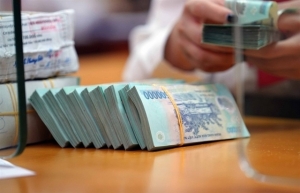The significant growth of green bonds
With Vietnam’s pledge at COP26 to reach net-zero by 2050, the public and private sectors’ need to mobilise capital and fund green and sustainable development projects are more urgent than ever. One of the best platforms for private and public sector stakeholders to expand and diversify their investor base is tapping into the green financial market.
 |
| Do Minh Chau, green finance analyst at FiinRatings |
According to the Asia Bond Monitor, the global sustainable bond market reached a size of $3.3 trillion at the end of June 2022, triple the figure at the end of 2019. Sustainable bonds in ASEAN+3 markets (ASEAN plus China, South Korea, and Japan) continued to gain traction in the first quarter of 2022, supported by robust issuance.
The number of sustainable bonds outstanding in the region reached $478.7 billion at the end of March, posting on-year expansion of 51.3 per cent and accelerating to growth of 9.7 per cent on-quarter in Q1/2022 from 5.6 per cent in the same period the previous year. Currently, ASEAN+3 accounts for 18.1 per cent of global sustainable bonds outstanding, trailing only Europe as the second-largest regional market worldwide.
However, ASEAN+3 sustainable bond markets have a high concentration of short-tenor financing, with three-quarters of sustainable bonds outstanding having tenors of five years or less at the end of March 2022. The region’s average value-weighted tenor of sustainable bonds outstanding was 4.2 years in Q1/2022, down from 5 years in Q4/2021. At the end of March, 62.5 per cent of ASEAN+3 sustainable bonds outstanding were issued in local currencies.
In comparison, the corresponding share of social bonds with tenors of five years or less is only 39 per cent in EU markets. Most green and sustainable projects require long-term funding to support their long-standing duration. This indicates more opportunities for longer-tenor (over five years) sustainability bonds in the ASEAN+3 market.
Despite robust and thriving sustainable bond markets in ASEAN+3, Vietnam is a relatively young presence within the region. Nonetheless, the Vietnam green bond market has been gaining significant growth momentum in the last few years thanks to driving forces from policymakers domestically, alongside major issuers’ activities on the international market. Several companies, such as PCC1 and Phu Yen TTP, have taken the initiative to head into the green finance and credit market through the green loan verification process with Climate Bonds Initiative (CBI) for their wind and solar energy projects. In July, EVN Finance issued Vietnam’s first certified green bond following International Capital Market Association’s Green Bond Framework.
 |
| Bonds associated with green ventures are likely to have long tenors Photo: Shutterstock |
A new horizon
While Vietnam is still in the developmental phase of its green and sustainable finance market, there are some existing credit policies to promote the development of several green sectors.
For instance, green agriculture projects and programmes enjoy certain benefits: preferential credit policy, interest rate support, guaranteed property incentives to the supply chain, high technology projects, and clean agriculture projects. Forestry production and preservation have access to preferential lending programmes.
Simultaneously, the State Bank of Vietnam provides preferential support to housing development, climate change prevention, and environmental pollution reduction programmes. Examples of such programmes are lending programmes to build adaptive housing in storms and floods prone areas, such as the central region and the Mekong Delta region of Vietnam, and rural clean water and sanitation programmes.
Nonetheless, these policies alone will not be enough to support Vietnam’s breakneck pace of development and increasing capital demands. Once Vietnam’s Power Development Plan VIII comes into effect, the renewable energy sector alone will require about $100 billion in the coming year.
Vietnamese banking and financial institutions alone will not be able to fund all of these projects. Hence, the green credit market is an excellent channel for projects and issuers to raise significant, long-term capital from foreign investors.
Presently, the Ministry of Finance, the Ministry of Natural Resources and Environment, the Ministry of Planning and Investment, and the State Bank of Vietnam are drafting a national decree on criteria for approving green credits and issuing green bonds.
This draft decree also includes Vietnam’s first Green Bond Taxonomy, which currently consists of an exhaustive list of 83 eligible project types. While this is a promising development for the domestic green finance market, the nation still lacks a specific framework and standard for green bonds for businesses and investors to refer to.
Along with the lack of guidelines, there is also a lack of independent green bond verification agencies and services to review the authenticity of how “green” certain green credits might be. This runs the risk of potentially having businesses greenwashing, mis-selling, and mislabelling their projects that are not aligning with the nation’s environmental and economic best interests.
For example, BNY Mellon was recently fined by the US Securities and Exchange Commission in May over several misstatements and omissions about its environmental, social, and governance (ESG) considerations.
Therefore, it is in Vietnam’s best interest to set clear guidelines and utilise independent green bond verifiers to avoid cases of greenwashing. This will increase transparency on green financial activities and encourage businesses to list on the stock market and conduct financial statements and annual reports with content on sustainable development and green bonds.
The bright side
While many challenges come with becoming a green bond issuer in a relatively young market, one will also enjoy significant benefits. One major advantage is that issuers will gain access to broader networks of domestic and international investors who are mandated to invest in green investments such as ESG, hence, diversifying their investor base.
Currently, there is a great deal of interest in Vietnam’s green finance market, especially from international organisations such as the Asian Development Bank, World Bank, and Global Green Growth Institute. Therefore, now is an opportune time for new issuers to garner more technical support from international organisations in building a solid foundation for their sustainable finance pipelines.
Most green and sustainable projects often have long durations, so bonds associated with these projects will have long tenors. With significant support from the Vietnam government and international investors, issuers have a favourable outlook on getting lower interest rates. Issuers will enjoy a better reputation through their association with scaling up financial flow towards a low-carbon economy.
Meanwhile, it is understandable for an investor in a relatively young market to have many concerns about certain investment risks. Nevertheless, issuers and investors will benefit from investing in the sustainable finance market. Most investors, including various funds, banks, and other financial institutions, will need to raise funds for their operations.
Therefore, by branching out into the green investment market, investors can diversify their portfolios while engaging and supporting the progress towards a low-carbon economy.
The drafted national decree on green credit and green finance also include a proposal to provide tax incentives for green bond investors.
While this market has great potential, businesses should also consider opportunities cautiously. As participants in the green bond market, companies should closely follow government regulations and legal developments around the green financial market, especially issues around market incentives and compliance for green issuances.
Currently, the most robust sector for green bond issuances and investments within the ASEAN+3 region are energy-related (renewable energy and energy efficiency improvement), followed by sustainable agriculture. However, there is also plenty of room for other sectors such as water management, clean transportation, and waste management to join.
As the market is facing significant headwinds in raising capital due to high-interest rates, businesses can diversify their capital channel through the green bond market, expanding their fund’s sources. Enterprises should also have a clear and detailed action plan for their green and sustainability-related projects and assets to attract long-term and sustainable funding, especially from foreign investors. The CBI has very detailed sector-specific eligibility criteria, which businesses should consult to ensure the legitimacy of the bond issuances.
 | Enterprises must be rated before issuing bonds: experts The Vietnamese corporate bond market is a young and growing market, but lacks control. Credit rating is one of the key steps to reducing risk and helping the market move towards proper development, according to experts. |
 | Changes in regulations to strengthen private placement bonds Decree 65 amends regulations on bond issuance purposes to strengthen the responsibilities and obligations of issuers in using raised capital for the right purposes. |
 | Investors need to have the right mindset to bonds Investors should have the right mindset and approach to the purchase of bonds to avoid investment risks, said experts attending the VIR talk show on November 4. |
What the stars mean:
★ Poor ★ ★ Promising ★★★ Good ★★★★ Very good ★★★★★ Exceptional
Related Contents
Latest News
More News
- Tax sector wraps up 2025 and sets priorities for next year (December 25, 2025 | 14:00)
- A tipping point for digital and hybrid wealth management in Vietnam (December 23, 2025 | 13:33)
- $250 million deal targets women-owned SMEs, sustainable agriculture (December 22, 2025 | 17:40)
- Stock market posts resilient 2025 performance (December 19, 2025 | 18:17)
- Citi Vietnam receives 2025 AmCham CSR recognition (December 19, 2025 | 16:35)
- As global green supply chain reshapes, will Vietnam be left behind? (December 19, 2025 | 08:00)
- Banks gear up for massive capital increases (December 18, 2025 | 17:04)
- Securing capital and efficiency for Vietnam’s 2026-2030 growth ambitions (December 17, 2025 | 10:00)
- Energy sector in need of blended finance mechanisms (December 17, 2025 | 09:00)
- Vietnam still has room to mobilise capital for sustainable growth (December 17, 2025 | 08:57)

 Tag:
Tag:





















 Mobile Version
Mobile Version